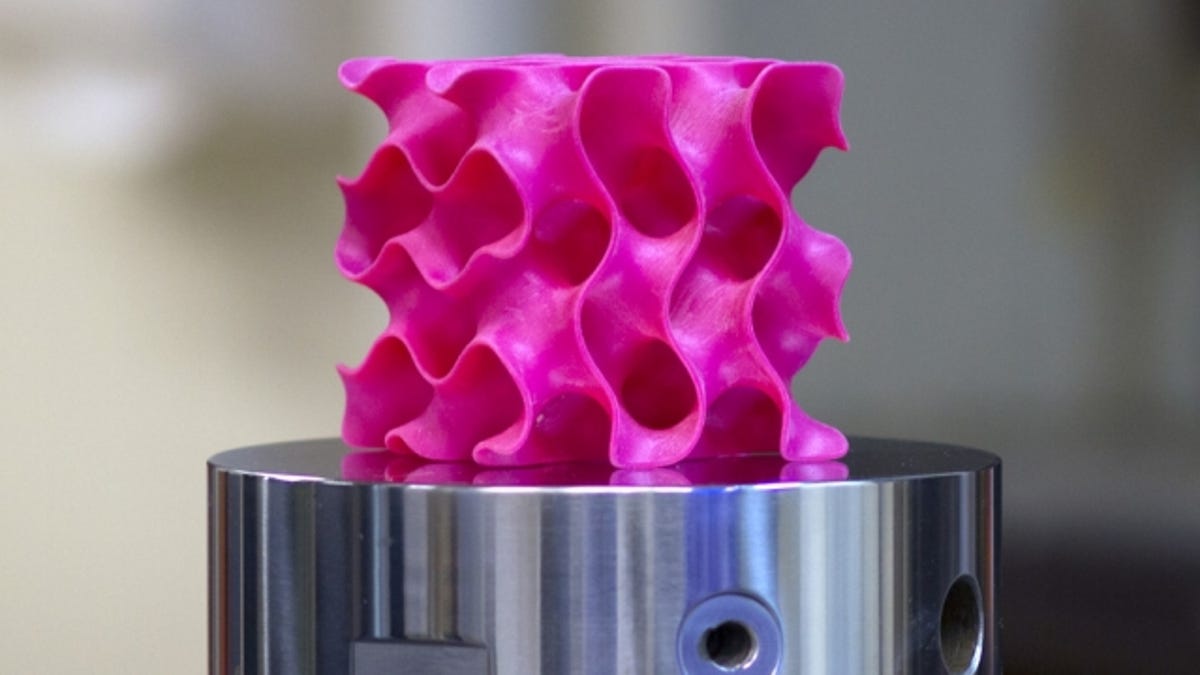This weird, sponge-like stuff is 10 times stronger than steel
It looks like a piece of Nerf or coral, but it's actually one of the strongest materials ever created.

Researchers used 3D-printed models to test the strength of the new lightweight material.
When you think of strength, you probably think of something dense and heavy, like steel. Well, MIT engineers have created one of the strongest materials ever, but it's more reminiscent of a foam Nerf toy than a metal beam.
The researchers used flakes of graphene, which is already recognized as the world's strongest two-dimensional material, to create a sponge-like shape that resembles a coral. Structural engineers and materials scientists will recognize it as something else: a holy grail.
That's because the odd, porous shape is 10 times stronger than steel and very lightweight, with a density of just 5 percent that of steel.
"What we've done is to realize the wish of translating these 2D materials into three-dimensional structures," said Markus Buehler in a release. Buehler is the head of MIT's Department of Civil and Environmental Engineering and co-author of a paper on the work published this month in the journal Science Advances.
If you were able to make a structural beam out of the stuff, it would be strong enough to hold the weight of a semi-tractor trailer, but you could also bend down and pick it up. It wouldn't weigh much more than a heavy piece of luggage.
The secret sauce of the new material, the researchers found, has more to do with its shape than with the graphene itself.
A three-dimensional graphene assembly and scanning electron microscope image of a graphene assembly
"You can replace the material itself with anything," Buehler said. "The geometry is the dominant factor. It's something that has the potential to transfer to many things."
He suggests that applying the geometry to different metals or polymers could lend them the same gains in strength. For example, a concrete bridge might be created using the porous shape, making it stronger, lighter and better insulated at the same time.
So look out in the future. Materials that look like Nerf toys may actually be far less forgiving should this stuff ever make it to market.
Check out the video below to see how the team used 3D-printed models to test the strength of different geometries.
Tech Enabled: CNET chronicles tech's role in providing new kinds of accessibility. Check it out here.
CNET Magazine: Check out a sampling of the stories you'll find in CNET's newsstand edition, right here.

